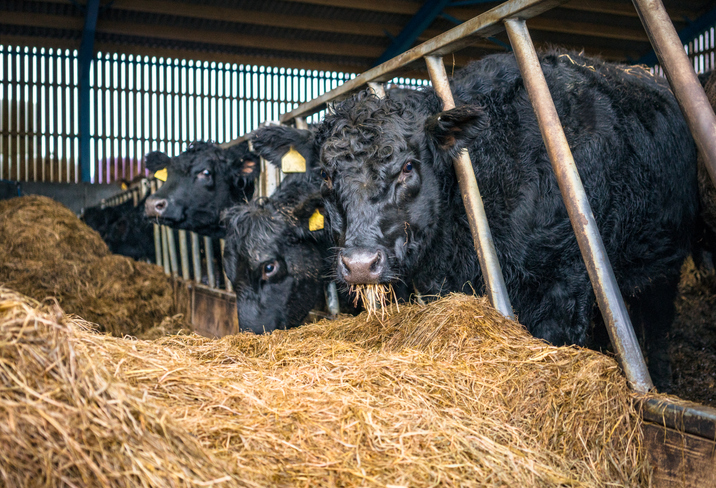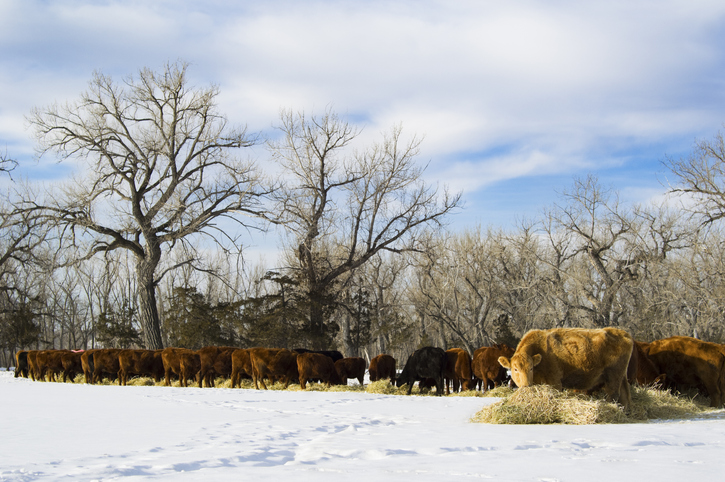In this edition of From the Field, we are going back to basics and refreshing our knowledge on dry matter intake (DMI).
What drives DMI? What limits DMI? How can we estimate DMI based on these factors?
All of this & more discussed below!
The foundation of any great cow-calf program starts with a great nutritional program. When it comes to beef cow nutrition, understanding dry matter (DM) and as fed (AF) values is important. Although we require as fed values for building a total mixed ration (TMR) and loading the mixer, to properly estimate dry matter intake (DMI) we need to know the dry matter content of our feed ingredients. Additionally, nutrients like protein, energy, vitamins, and minerals are always associated with dry matter, not moisture, and since these nutrients are what drive performance, we need to know how they stack up.
It is important to remember that a cow has nutrient intake requirements, not dry matter intake requirements, although these two concepts do go hand in hand. To formulate a proper feeding program, we need to know how much dry matter a cow consumes, so that we can meet her nutrient requirements. These requirements will vary depending on several important factors: weight/body condition, level of production (growth, gestation, lactation), available bunk space (i.e., competition), and environmental temperature (heat/cold stress). Having a good handle on the expected daily feed intake of your cow herd is especially important when determining the amount of harvested forage needed on hand.

Let’s break this down with an example. Say we have 1200 lb beef cow and we want to estimate her DMI. On a dry matter basis, she will likely consume 2% of her body weight (BW) daily, although this will depend on some of the other factors listed earlier (production level, temperature, etc.). Regardless, a DMI of 2% of BW would pencil out to 24 lbs of dry matter (1200 x 0.02 = 24). Now, we must consider the dry matter content of our feed ingredients. If we are feeding hay that is 88% dry matter, then 24 lbs of dry matter is 27 lbs of hay as fed (24 / 0.88 = 28). A proper understanding of this “moisture math” can certainly come in handy!
Now let’s consider forage quality and its relationship to DMI. Cows will consume poor quality forages like wheat straw at much lower levels (1.25-1.50% BW) compared to higher quality forages like alfalfa (2.5% BW). This basis for these DMI differences is digestibility. Since straw has such a low digestibility, it requires some extra digestion time in the rumen. This will reduce the rate of passage and limit space for more feed, thereby lowering intake. This is not to say that straw is a poor ingredient for a feeding program, as it’s certainly important for scratch factor and proper rumen function, but it should be fed with higher quality ingredients to ensure energy requirements are being met.

Lactating cows have high protein and energy requirements, and therefore during this stage of production, DMI will increase to meet the demands of milk production. However, the extent to which DMI is increased will depend on forage quality. Lactating cows will consume low, average, and high-quality forages at 2.0, 2.3, and 2.5% of their BW, respectively. Routine forage testing will allow nutritionists to fine tune a feeding program to meet performance requirements at different stages of production.
As mentioned earlier, bunk space and environmental temperature can also influence DMI. If bunk space is limited, and not all animals have an equal opportunity to consume feed, the more timid cows probably won’t consume enough, and the more dominant cows will likely consume more than penciled out in the feeding program. In terms of environmental temperature, during extreme cold weather events cows will require more feed due to increased energy requirements. In this case, the energy density of the diet should be increased. In some cases, increasing fibre intake may also be an effective strategy to warm the animal through heat of fermentation.
Dry matter intake can certainly get confusing, especially when several factors are at play (production level, forage quality, temperature, etc.), but a proper understanding of the concepts described here can make estimating the DMI of your cow herd a little easier!
